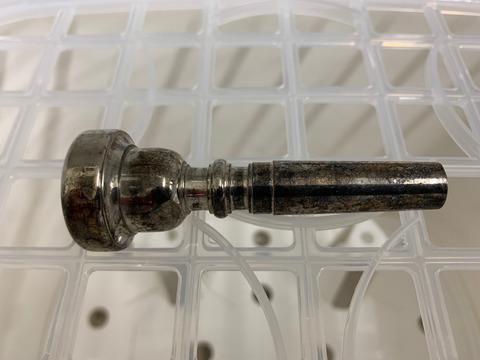当前位置:
X-MOL 学术
›
Lett. Appl. Microbiol.
›
论文详情
Our official English website, www.x-mol.net, welcomes your
feedback! (Note: you will need to create a separate account there.)
Successful disinfection of trumpet mouthpieces using domestic steam disinfection
Letters in Applied Microbiology ( IF 2.0 ) Pub Date : 2020-08-14 , DOI: 10.1111/lam.13367 J E Moore 1, 2 , B C Millar 1, 2
Letters in Applied Microbiology ( IF 2.0 ) Pub Date : 2020-08-14 , DOI: 10.1111/lam.13367 J E Moore 1, 2 , B C Millar 1, 2
Affiliation

|
There have been numerous reports in the literature describing the diversity of microbial flora isolated from woodwind and brass instruments, with potential infection risks for players, especially when such instruments are shared. Steam disinfection has become established as a trusted method of decontamination; however, there have been no reports on the employment of this technology to disinfect parts of musical instruments, hence it was the aim of this study to examine the fate of bacterial and yeast pathogens on artificially contaminated trumpet mouthpieces and to evaluate whether such disinfection is an effective method of disinfection for such instrument parts. Trumpet mouthpieces were artificially contaminated with 18 microbial strains (17 bacteria from four genera (Enterococcus, Escherichia, Staphylococcus and Streptococcus) and one yeast (Candida)), each at an inoculum density of approximately 1·5 × 107 colony forming units and subjected to a disinfection cycle. The experiment was repeated including 50% (v/v) sterile sputum as soil. No bacteria or yeast organisms were recovered post disinfection, including following recovery and with nonselective cultural enrichment techniques.
中文翻译:

小号吹嘴用家用蒸汽消毒成功
文献中有大量报道描述了从木管乐器和铜管乐器中分离出的微生物菌群的多样性,这对演奏者具有潜在的感染风险,尤其是在共用这些乐器时。蒸汽消毒已成为一种值得信赖的去污方法;然而,没有关于使用该技术对乐器部件进行消毒的报道,因此本研究的目的是检查细菌和酵母病原体在人为污染的小号吹嘴上的归宿,并评估这种消毒是否是一种有效的消毒方法。此类仪器部件的有效消毒方法。小号吹嘴被 18 种微生物菌株(来自 4 个属(肠球菌、埃希氏菌、葡萄球菌和链球菌)和一种酵母(念珠菌)),每种的接种密度约为 1·5 × 107 菌落形成单位,并进行消毒循环。重复实验,包括 50% (v/v) 无菌痰作为土壤。消毒后没有回收到细菌或酵母菌,包括回收后和非选择性培养富集技术。
更新日期:2020-08-14
中文翻译:

小号吹嘴用家用蒸汽消毒成功
文献中有大量报道描述了从木管乐器和铜管乐器中分离出的微生物菌群的多样性,这对演奏者具有潜在的感染风险,尤其是在共用这些乐器时。蒸汽消毒已成为一种值得信赖的去污方法;然而,没有关于使用该技术对乐器部件进行消毒的报道,因此本研究的目的是检查细菌和酵母病原体在人为污染的小号吹嘴上的归宿,并评估这种消毒是否是一种有效的消毒方法。此类仪器部件的有效消毒方法。小号吹嘴被 18 种微生物菌株(来自 4 个属(肠球菌、埃希氏菌、葡萄球菌和链球菌)和一种酵母(念珠菌)),每种的接种密度约为 1·5 × 107 菌落形成单位,并进行消毒循环。重复实验,包括 50% (v/v) 无菌痰作为土壤。消毒后没有回收到细菌或酵母菌,包括回收后和非选择性培养富集技术。











































 京公网安备 11010802027423号
京公网安备 11010802027423号